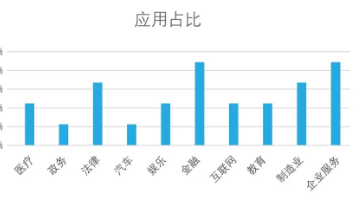学以致用 实现计算机视觉分类的 各类图像增广
学以致用 实现计算机视觉分类的 各类图像增广常用图像增广方法主要有:左右翻转(上下翻转对于许多目标并不常用),随机裁剪,变换颜色(亮度,对比度,饱和度和色调)等等,我们拟用opencv-python实现部分数据增强方法。用来完成增广结构如下:class FunctionClass:def __init__(self, parameter):self.parameter=parameterdef _
学以致用 实现计算机视觉分类的 各类图像增广
常用图像增广方法主要有:左右翻转(上下翻转对于许多目标并不常用),随机裁剪,变换颜色(亮度,对比度,饱和度和色调)等等,我们拟用opencv-python实现部分数据增强方法。
用来完成增广
结构如下:
class FunctionClass:
def __init__(self, parameter):
self.parameter=parameter
def __call__(self, img):
要求
- 1.补全代码
- 2.验证增强效果
- 3.可自选实现其他增强效果
Why we need to use 'class" not a function
我们为什么要用类来完成这些功能呢?
大佬如是说:

import cv2
import numpy as np
from matplotlib import pyplot as plt
%matplotlib inline
filename = '1.jpg'
## [Load an image from a file]
img = cv2.imread(filename)
img = cv2.cvtColor(img, cv2.COLOR_BGR2RGB)
plt.imshow(img)

print(img.shape)
(720, 1080, 3)
看完小姐姐,努力工作
“我的飞桨学习之旅”活动 正式开启!
https://paddlepaddle.cloud.csdn.net/p/w02wdw01
1.图片缩放
Let’s look at the details of the ‘cv2.resize’
?cv2.resize
调整大小(src,dsize[,dst[,fx[,fy[,插值])->dst。
cv2.resize(InputArray src, OutputArray dst, Size, fx, fy, interpolation)
| InputArray src | 输入图片 |
|---|---|
| Size | 输出图片尺寸 |
| fx, fy | 沿x轴,y轴的缩放系数 |
| interpolation | 插入方式 |
interpolation 选项所用的插值方法:
| INTER_NEAREST | 最近邻插值 |
|---|---|
| INTER_LINEAR | 双线性插值(默认设置) |
| INTER_AREA | 使用像素区域关系进行重采样。 |
| INTER_CUBIC | 4x4像素邻域的双三次插值 |
| INTER_LANCZOS4 | 8x8像素邻域的Lanczos插值 |
interpolation - 插值方法。共有5种:
1)INTER_NEAREST - 最近邻插值法
2)INTER_LINEAR - 双线性插值法(默认)
3)INTER_AREA - 基于局部像素的重采样(resampling using pixel area relation)。
对于图像抽取(image decimation)来说,这可能是一个更好的方法。但如果是放大图像时,它和最近邻法的效果类似。
4)INTER_CUBIC - 基于4x4像素邻域的3次插值法
5)INTER_LANCZOS4 - 基于8x8像素邻域的Lanczos插值
注意:
1.输出尺寸格式为(宽,高)
2.默认的插值方法为:双线性插值
class Resize:
def __init__(self, size=(600,600),scale=0): #可选比例,可选尺寸。
self.size=size
self.scale=scale
def __call__(self, img):
if self.scale > 0:
return cv2.resize(img,(0,0),fx=self.scale,fy=self.scale,interpolation=cv2.INTER_NEAREST)
else:
return cv2.resize(img,self.size)
img = cv2.imread(filename)
img = cv2.cvtColor(img, cv2.COLOR_BGR2RGB)
resize=Resize((1024, 668))
img2=resize(img)
print(f'选择缩放尺寸')
print(f'new size (HWC): {img2.shape}')
plt.figure(figsize=(8,10),dpi=100)
plt.imshow(img2)
选择缩放尺寸
new size (HWC): (668, 1024, 3)
![[外链图片转存失败,源站可能有防盗链机制,建议将图片保存下来直接上传(img-3ADwBECr-1615303780768)(output_10_2.png)]](https://i-blog.csdnimg.cn/blog_migrate/8c3ef9a7c296b2333bc9003ae3180abb.png#pic_center)
resize=Resize(scale=0.8)
img2=resize(img)
print(f'new size (HWC): {img2.shape}')
print(f'选择缩放比例')
plt.figure(figsize=(8,10),dpi=100)
plt.imshow(img2)
new size (HWC): (576, 864, 3)

2.图片翻转
?cv2.flip
函数功能: 将二维数组围绕水平、垂直或两个轴进行翻转。
src :输入数组
flipCode:为一个标志,指定数组如何翻转数组。
flipCode dst
| flipCode | dst |
|---|---|
| 1 | 水平翻转 |
| 0 | 垂直翻转 |
| -1 | 水平和垂直翻转 |
class Flip:
'''
函数功能: 将二维数组围绕水平、垂直或两个轴进行翻转。
src :输入数组
flipCode:为一个标志,指定数组如何翻转数组。
'''
def __init__(self, mode):
self.mode=mode
def __call__(self, img):
return cv2.flip(img,self.mode)
def __str__(self):
return "mode = [-1,0,1]"
import random
flip=Flip(mode=-1)
img2=flip(img)
plt.figure(figsize=(8,10),dpi=100)
plt.axis('off')
plt.imshow(img2)

3种翻转效果 比较
img = cv2.imread(filename)
img = cv2.cvtColor(img, cv2.COLOR_BGR2RGB)
mode = [-1,0,1]
imgs=[]
imgs.append(img)
for i in mode:
flip=Flip(mode=i)
img2=flip(img)
imgs.append(img2)
img2=np.concatenate(imgs,1)
print(f'new size (HWC): {img2.shape}')
plt.figure(figsize=(8,10),dpi=100)
plt.axis('off')
plt.imshow(img2)
new size (HWC): (720, 4320, 3)

随机翻转效果 (自定义)
class RandomFlip:
'''
函数功能: 将二维数组围绕水平、垂直或两个轴进行翻转。
src :输入数组
flipCode:为一个标志,指定数组如何翻转数组。
'''
def __init__(self):
self.mode=random.choice([-1,0,1])
def __call__(self, img):
return cv2.flip(img,self.mode)
def __str__(self):
return "RandomFlip"
import random
rflip=RandomFlip()
img2=rflip(img)
plt.axis('off')
plt.imshow(img2)

imgs=[]
for i in range(3):
img=rflip(img)
imgs.append(img)
fig, axes = plt.subplots(1,3, figsize=(12, 12))
for n, ax in enumerate(axes.flatten()):
ax.imshow(imgs[n]);
ax.set_axis_off()
fig.tight_layout()
![[外链图片转存失败,源站可能有防盗链机制,建议将图片保存下来直接上传(img-icNk9mZJ-1615303780776)(output_19_0.png)]](https://i-blog.csdnimg.cn/blog_migrate/8af57c92536418db0d2a1e00dd095212.png#pic_center)
3图片旋转
class Rotate:
def __init__(self, degree,size):
self.degree=degree
self.size=size
def __call__(self, img):
height,width,_ =img.shape
matRotate = cv2.getRotationMatrix2D((height*0.5, width*0.5), self.degree, self.size) # mat rotate 1 center 2 angle 3 缩放系数
return cv2.warpAffine(img, matRotate, (height, width))
rotate=Rotate(65, 0.7)
img2=rotate(img)
plt.figure(figsize=(8,10),dpi=50)
print(f'new size (HWC): {img2.shape}')
plt.axis('off')
plt.imshow(img2)
new size (HWC): (1080, 720, 3)

随机任意旋转 (自定义)
def random_rotate(img):
height,width,_ =img.shape
degree=random.choice(range(0,360,10))
size=random.uniform(0.5, 0.9)
matRotate = cv2.getRotationMatrix2D((height*0.5, width*0.5),degree, size) # mat rotate 1 center 2 angle 3 缩放系数
return cv2.warpAffine(img, matRotate, (width,height ))
imgs=[]
for i in range(9):
imgs.append(random_rotate(img))
imgs_v=[]
for i in range(0,9,3):
imgs_v.append(np.concatenate(imgs[i:i+3],1))
img_h=np.concatenate(imgs_v,0)
plt.figure(figsize=(8,10),dpi=50)
print(f'new size (HWC): {img_h.shape}')
plt.figure(figsize=(8,10),dpi=100)
plt.axis('off')
plt.imshow(img_h)
new size (HWC): (2160, 3240, 3)

4.图片亮度调节
class Brightness:
def __init__(self,brightness_factor):
self.brightness_factor=brightness_factor
def __call__(self, img):
shape =img.shape
dst= np.zeros(shape, img.dtype)
return cv2.addWeighted(img, self.brightness_factor, dst, 1-self.brightness_factor, 3)
img = cv2.imread('1.jpg')
img = cv2.cvtColor(img, cv2.COLOR_BGR2RGB)
brightness=Brightness(1.2)
img2=brightness(img)
plt.axis('off')
plt.imshow(img2)

?cv2.addWeighted
渐进式调节亮度 (自定义)
import math
def bright(img,factor):
shape =img.shape
dst= np.zeros(shape, img.dtype)
return cv2.addWeighted(img, factor, dst, 1-factor, 3)
imgs=[]
for i in range(1,5):
imgs.append(bright(img,math.sin(1/i)))
img1=np.concatenate(imgs,1)
plt.figure(figsize=(8,10),dpi=100)
plt.axis('off')
plt.imshow(img1)

5.图片随机裁剪
import random
import math
class RandomErasing(object):
def __init__(self, EPSILON=0.5, sl=0.02, sh=0.4, r1=0.25,
mean=[0., 0., 0.]):
self.EPSILON = EPSILON
self.mean = mean
self.sl = sl
self.sh = sh
self.r1 = r1
def __call__(self, img):
if random.uniform(0, 1) > self.EPSILON: # 擦除的几率 为50%
return img
for attempt in range(100):
area = img.shape[0] * img.shape[1]
target_area = random.uniform(self.sl, self.sh) * area
aspect_ratio = random.uniform(self.r1, 1 / self.r1) #(0.25,4),大于1的概率大
h = int(round(math.sqrt(target_area * aspect_ratio))) # 前面定义的面积,开方后作为高
w = int(round(math.sqrt(target_area / aspect_ratio))) # 前面定义的面积,开方后作为作为宽
if w < img.shape[0] and h < img.shape[1]:
x1 = random.randint(0, img.shape[1] - h)
y1 = random.randint(0, img.shape[0] - w)
if img.shape[2] == 3:
img[ x1:x1 + h, y1:y1 + w, 0] = self.mean[0]
img[ x1:x1 + h, y1:y1 + w, 1] = self.mean[1]
img[ x1:x1 + h, y1:y1 + w, 2] = self.mean[2]
else:
img[x1:x1 + h, y1:y1 + w,0] = self.mean[0]
return img
img = cv2.imread('1.jpg')
img = cv2.cvtColor(img, cv2.COLOR_BGR2RGB)
erase = RandomErasing()
img2=erase(img)
plt.figure(figsize=(8,10),dpi=100)
plt.axis('off')
plt.imshow(img2)

img = cv2.imread('1.jpg')
img = cv2.cvtColor(img, cv2.COLOR_BGR2RGB)
imgs=[]
transforms=[rflip,random_rotate,brightness,erase]
# 遍历上述各种效果
for transform in transforms:
imgs.append(transform(img))
img1 = np.concatenate(imgs,1)
print(f'img1:{img1.shape}')
# 叠加上述各种效果
imgs=[]
for transform in transforms:
img=transform(img)
#print(img.shape)
imgs.append(img)
img2 = np.concatenate(imgs,1)
print(f'img2:{img1.shape}')
img3=np.concatenate([img1,img2],0)
plt.figure(figsize=(8,10),dpi=100)
plt.axis('off')
g=transform(img)
#print(img.shape)
imgs.append(img)
img2 = np.concatenate(imgs,1)
print(f'img2:{img1.shape}')
img3=np.concatenate([img1,img2],0)
plt.figure(figsize=(8,10),dpi=100)
plt.axis('off')
plt.imshow(img3)
img1:(720, 4320, 3)
img2:(720, 4320, 3)

更多推荐
 已为社区贡献2条内容
已为社区贡献2条内容








所有评论(0)